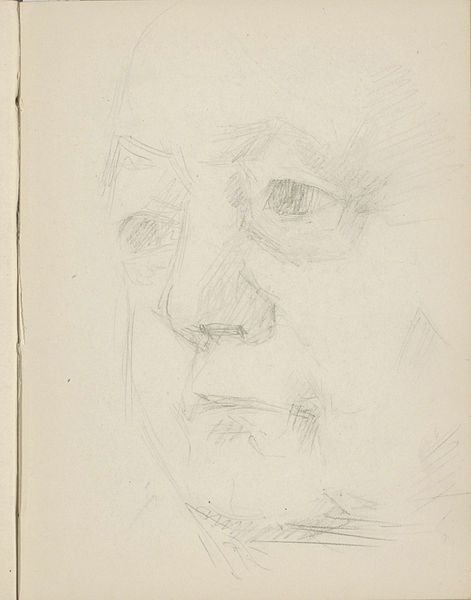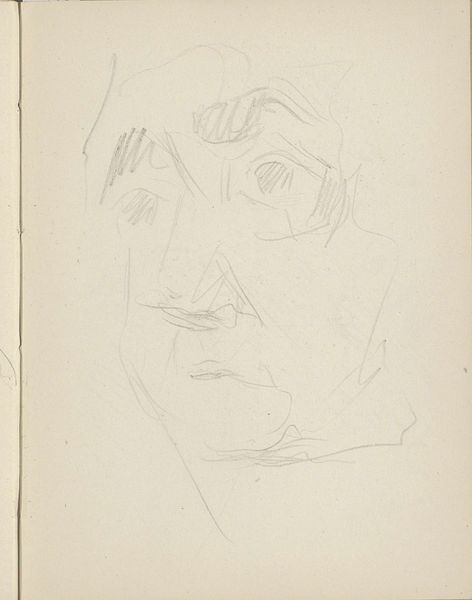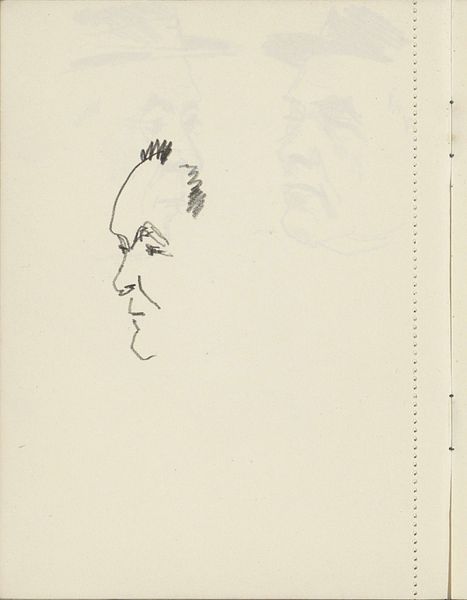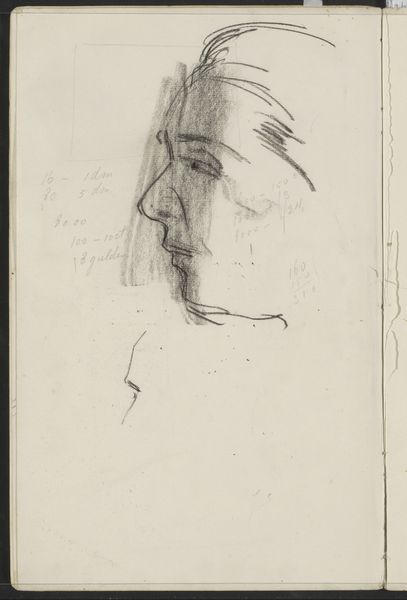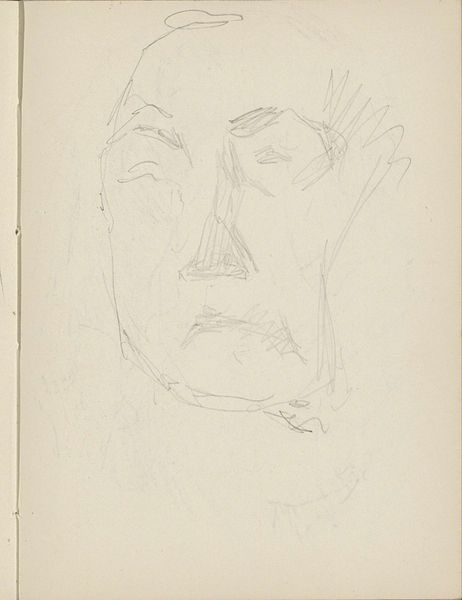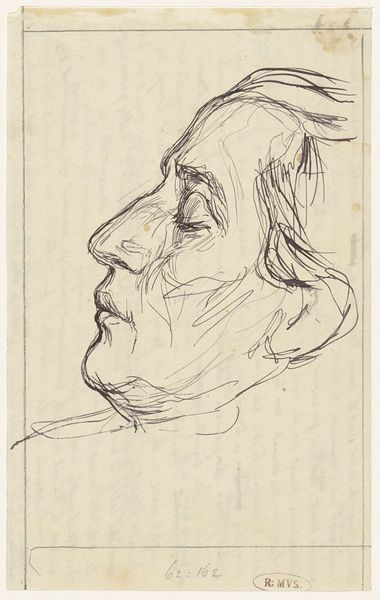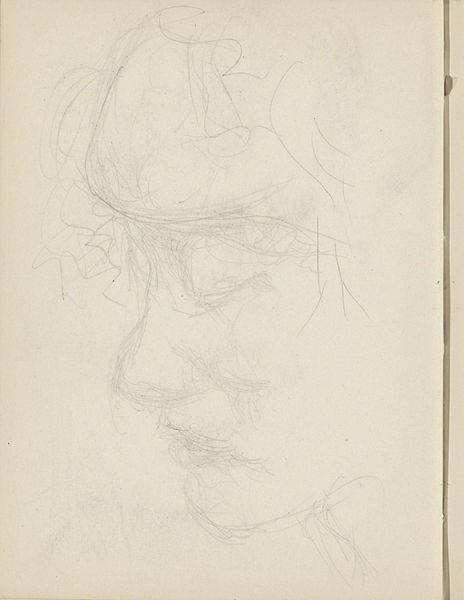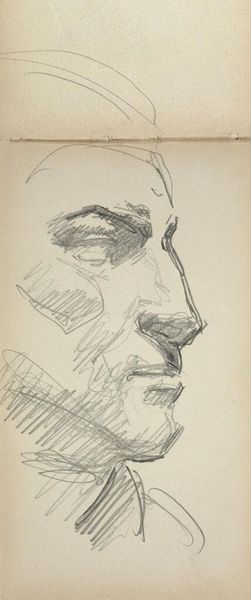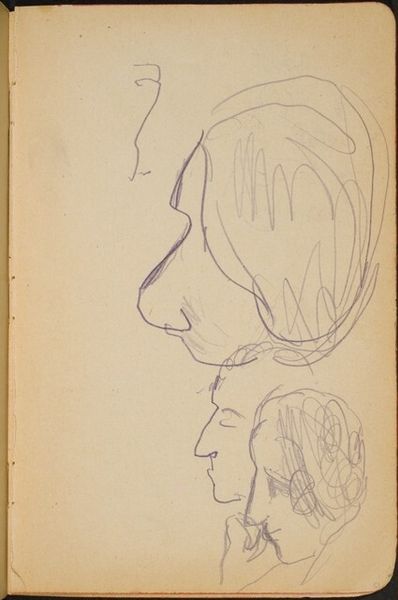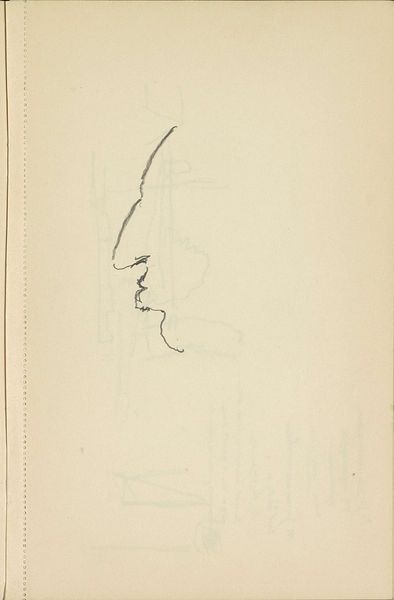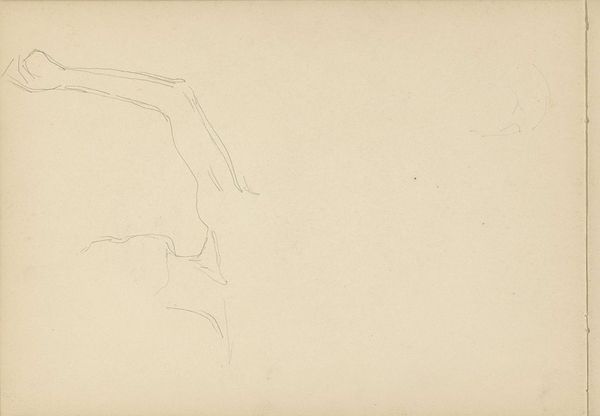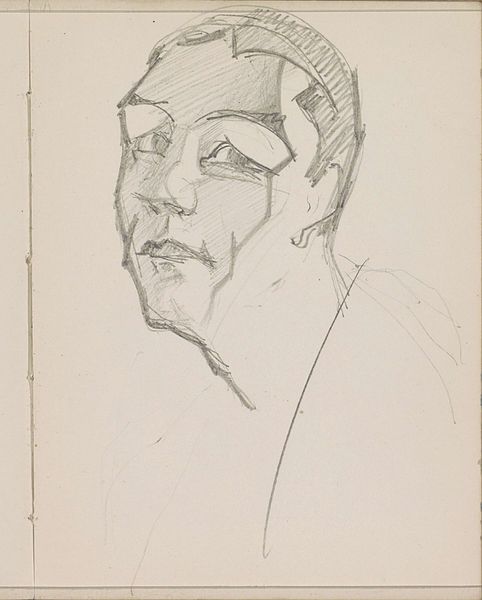
drawing, pencil, graphite
#
portrait
#
drawing
#
amateur sketch
#
light pencil work
#
figuration
#
personal sketchbook
#
idea generation sketch
#
sketchwork
#
ink drawing experimentation
#
pencil
#
line
#
graphite
#
sketchbook drawing
#
storyboard and sketchbook work
#
sketchbook art
#
realism
#
initial sketch
Copyright: Rijks Museum: Open Domain
Editor: Here we have a pencil drawing, "Gezicht van een man in profiel naar rechts" - "Face of a Man in Profile to the Right"—created sometime between 1906 and 1945. It’s currently held at the Rijksmuseum. I’m struck by how simple it is; almost like a fleeting glimpse of a man caught in a sketchbook. What catches your eye about this sketch? Curator: Well, this appears to be more than just a quick sketch. Considering the period, between 1906 and 1945, we're looking at a turbulent era encompassing both World Wars. Such preliminary sketches are invaluable in understanding the artistic process during those years. This wasn't simply a disinterested study; art served as an avenue for catharsis and resistance, reflecting and even subtly challenging societal norms and anxieties during times of such upheaval. Does that connection resonate with you here? Editor: That's fascinating. So, you're saying this simple drawing could be a reflection, in some way, of broader social tensions? I hadn’t considered that. How does that perspective change the way you see the piece? Curator: Precisely. The act of sketching itself becomes an assertion of identity and continuity. It represents an internal conversation the artist had with his work that wasn't displayed in public at the time it was created. These glimpses can reflect quiet defiance and even a search for humanity amidst widespread destruction. The intimacy and immediacy suggest that, even when creating a simple profile study, the artist isn't working in a vacuum. It's all intertwined. Editor: That gives me a whole new perspective. I was initially focused on the style, but I see that there's more depth here. Thanks, that was insightful! Curator: And thank you, this exercise highlights the vital role even seemingly minor pieces play in shaping a greater socio-political art history.
Comments
No comments
Be the first to comment and join the conversation on the ultimate creative platform.

